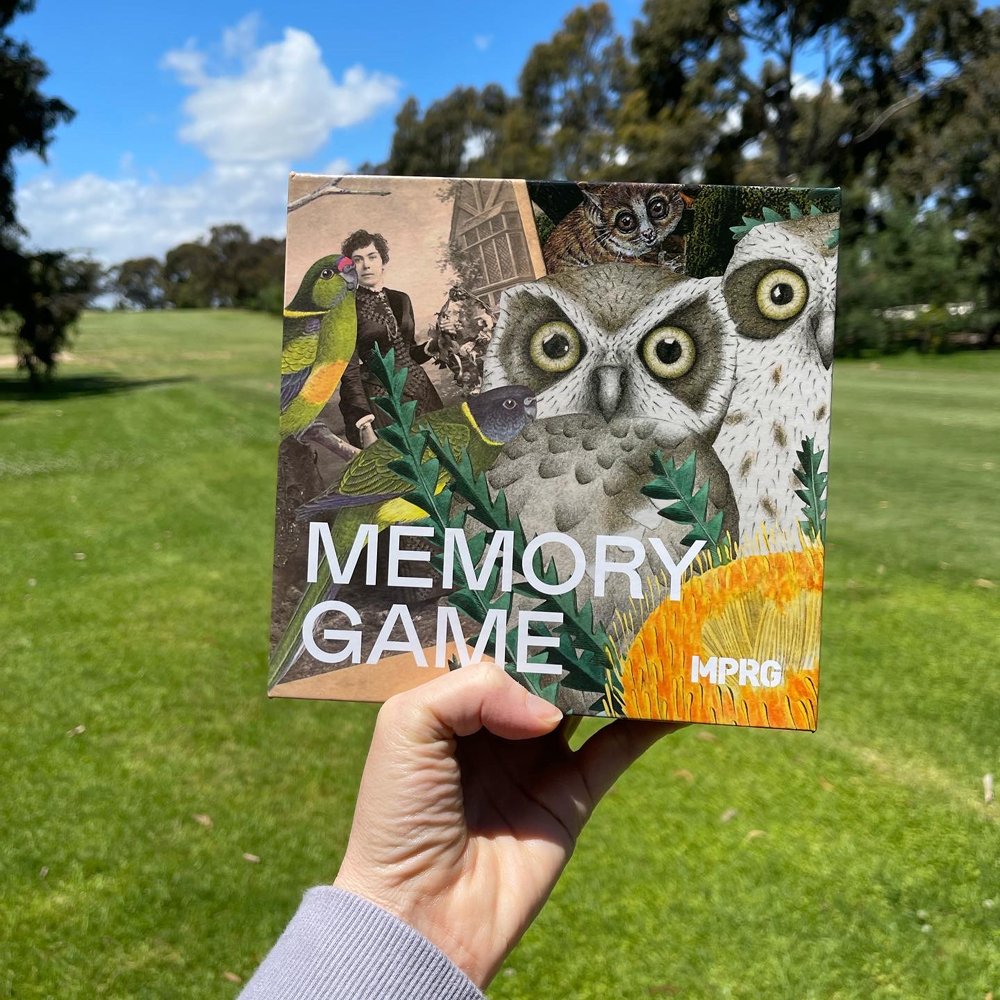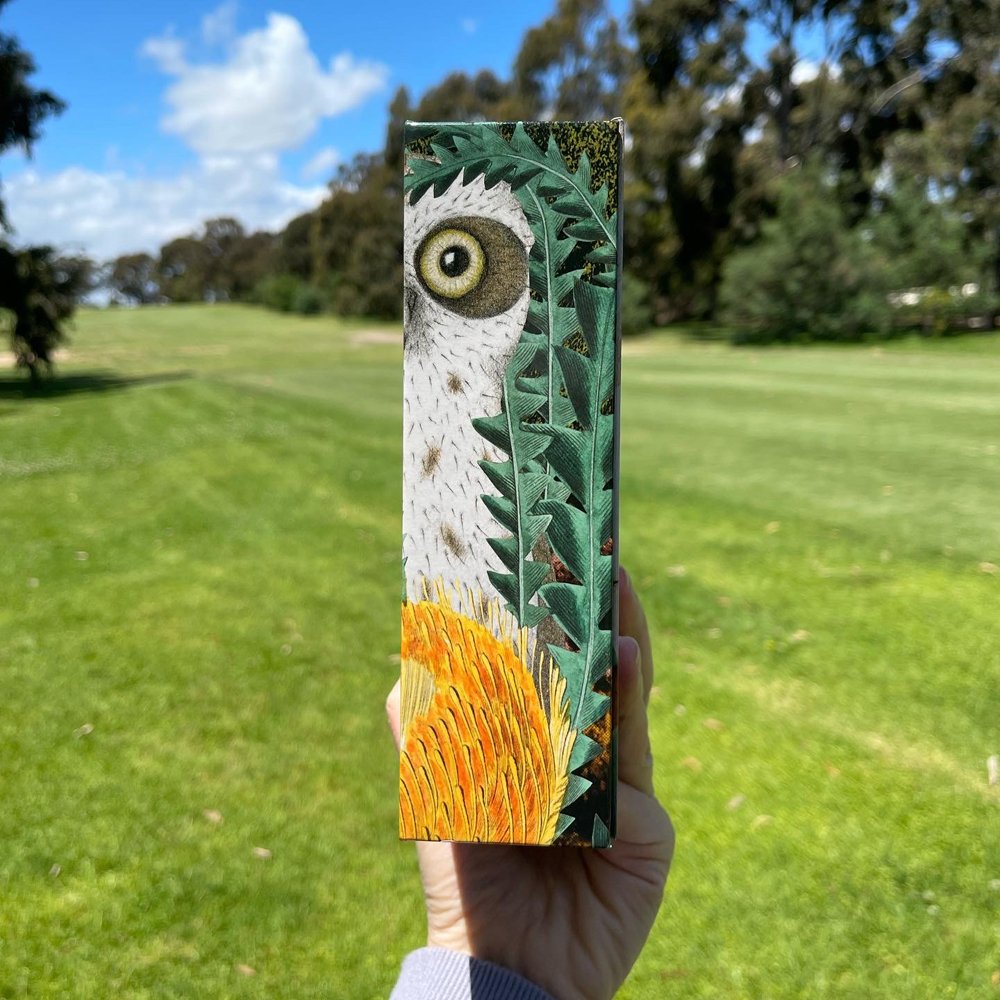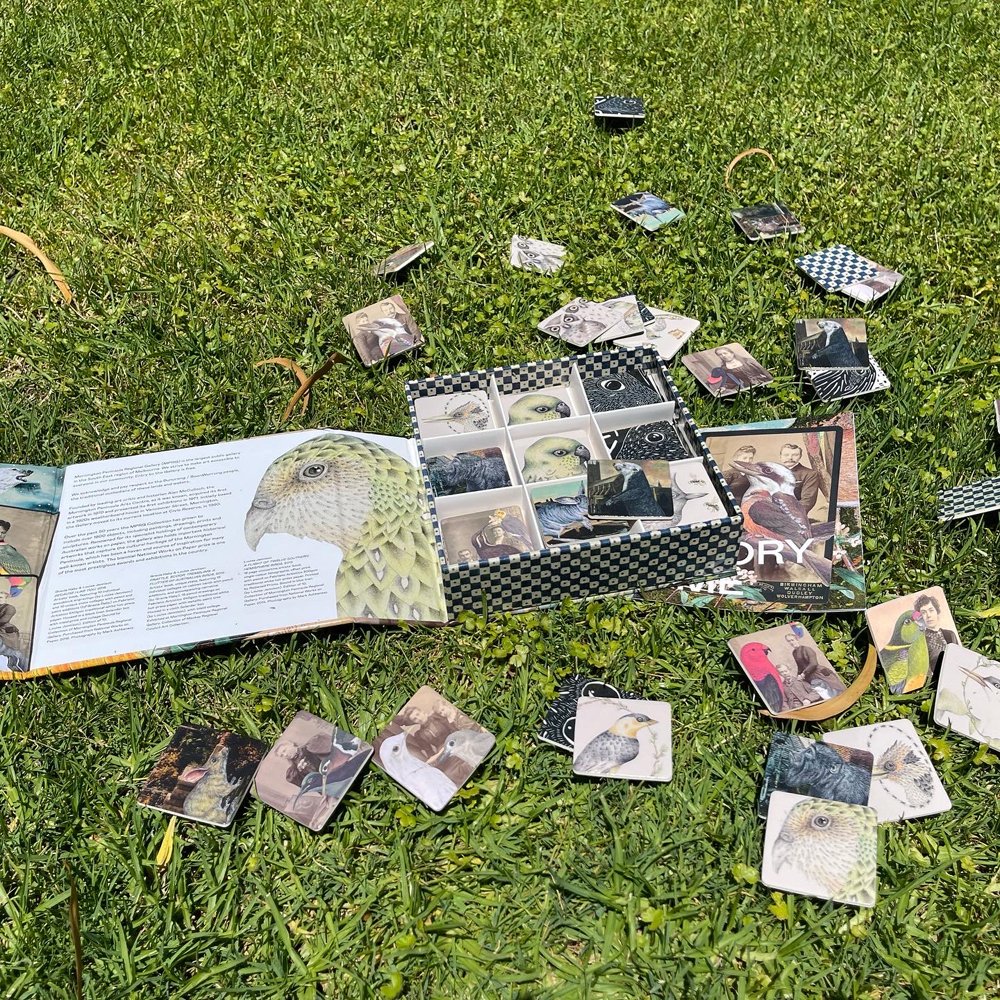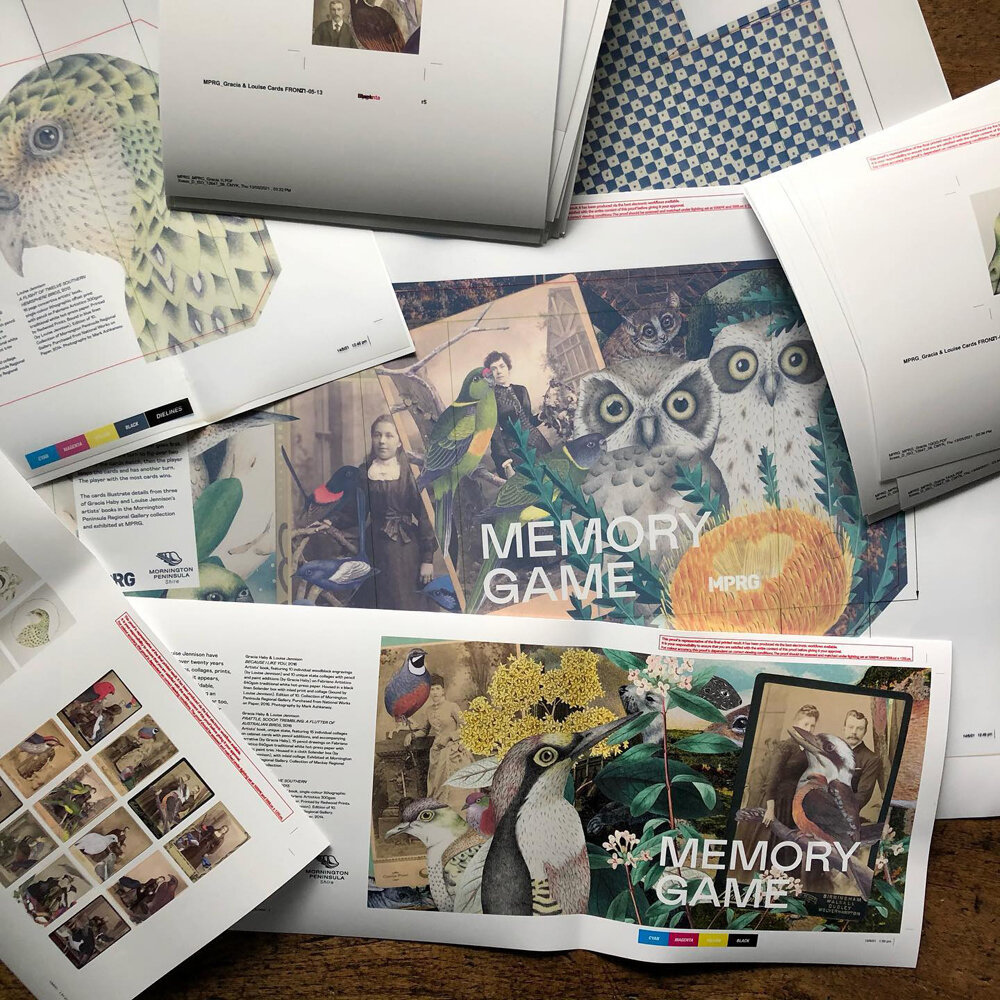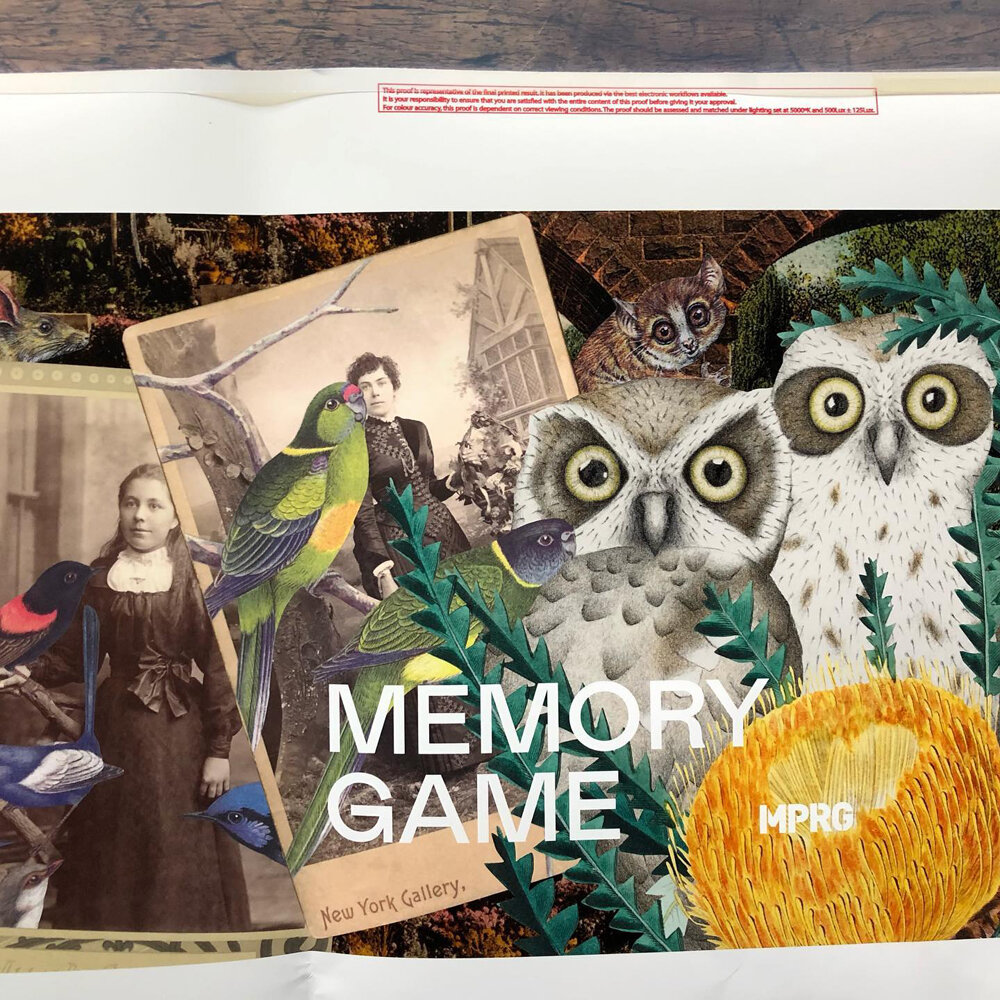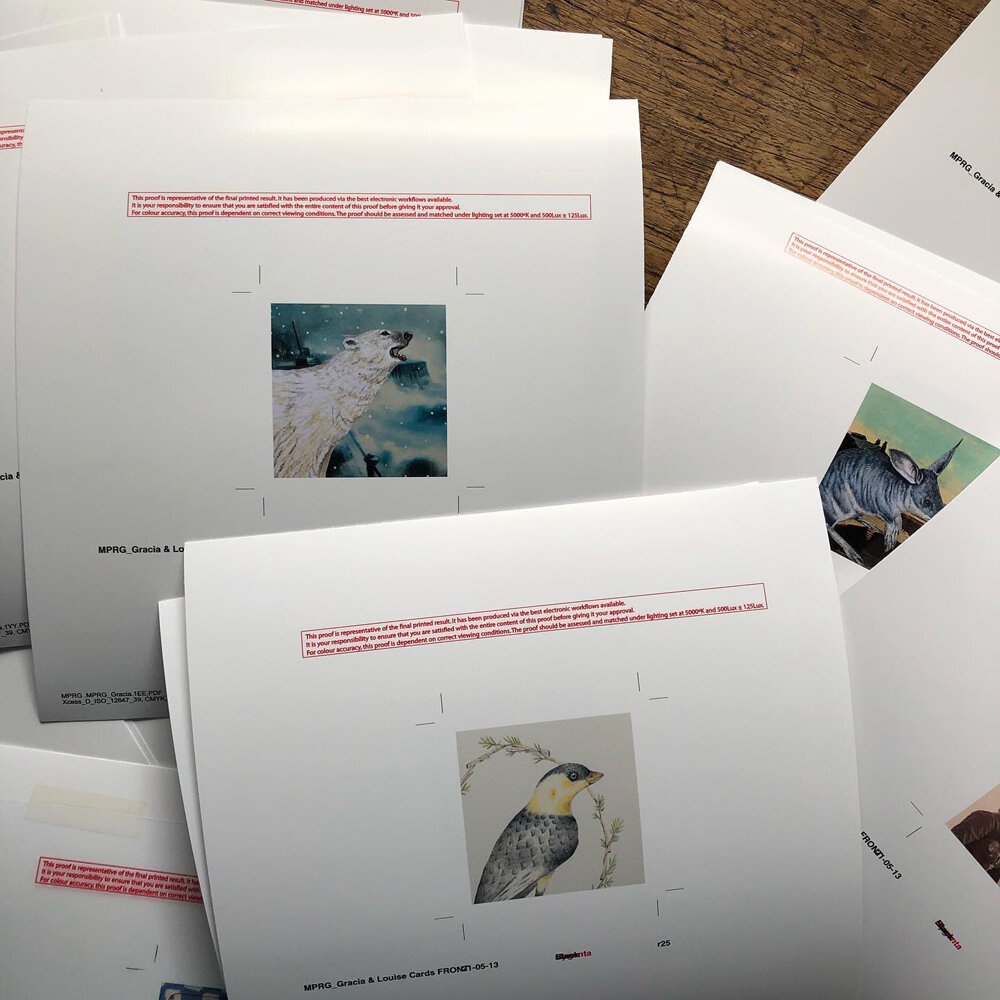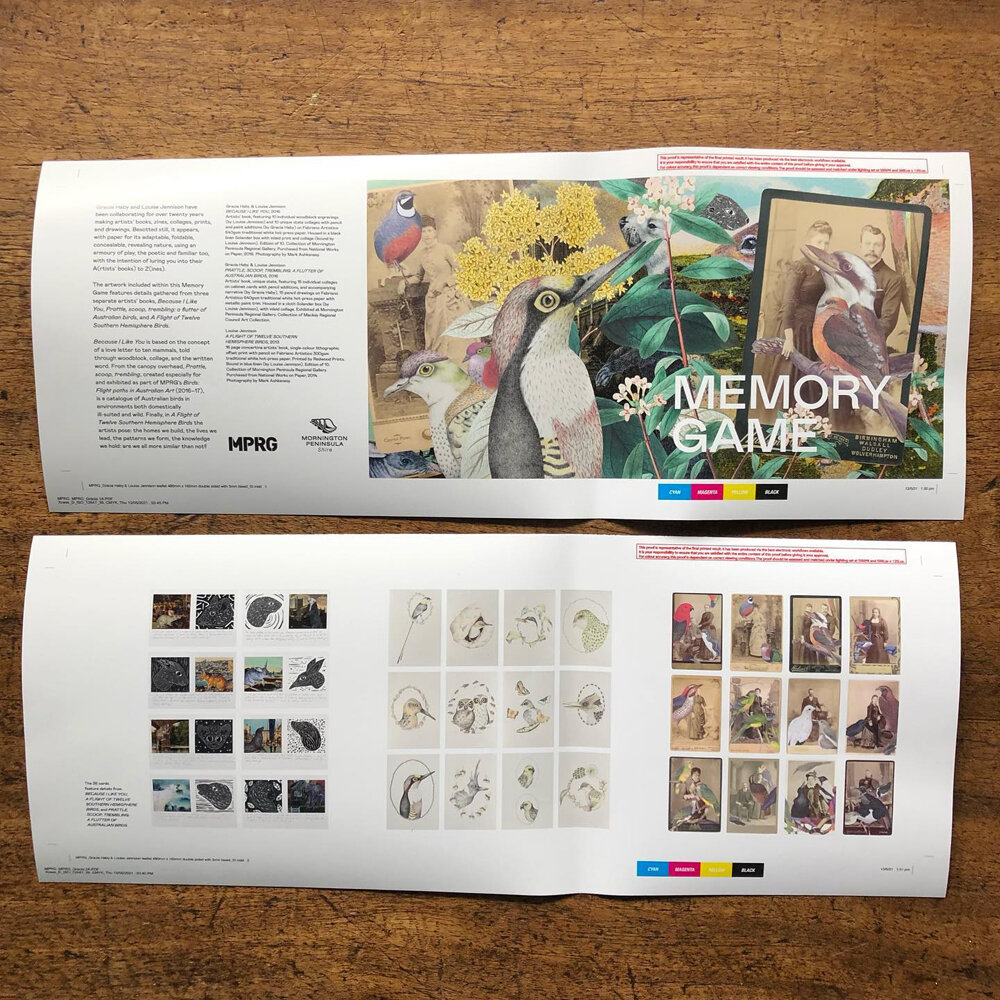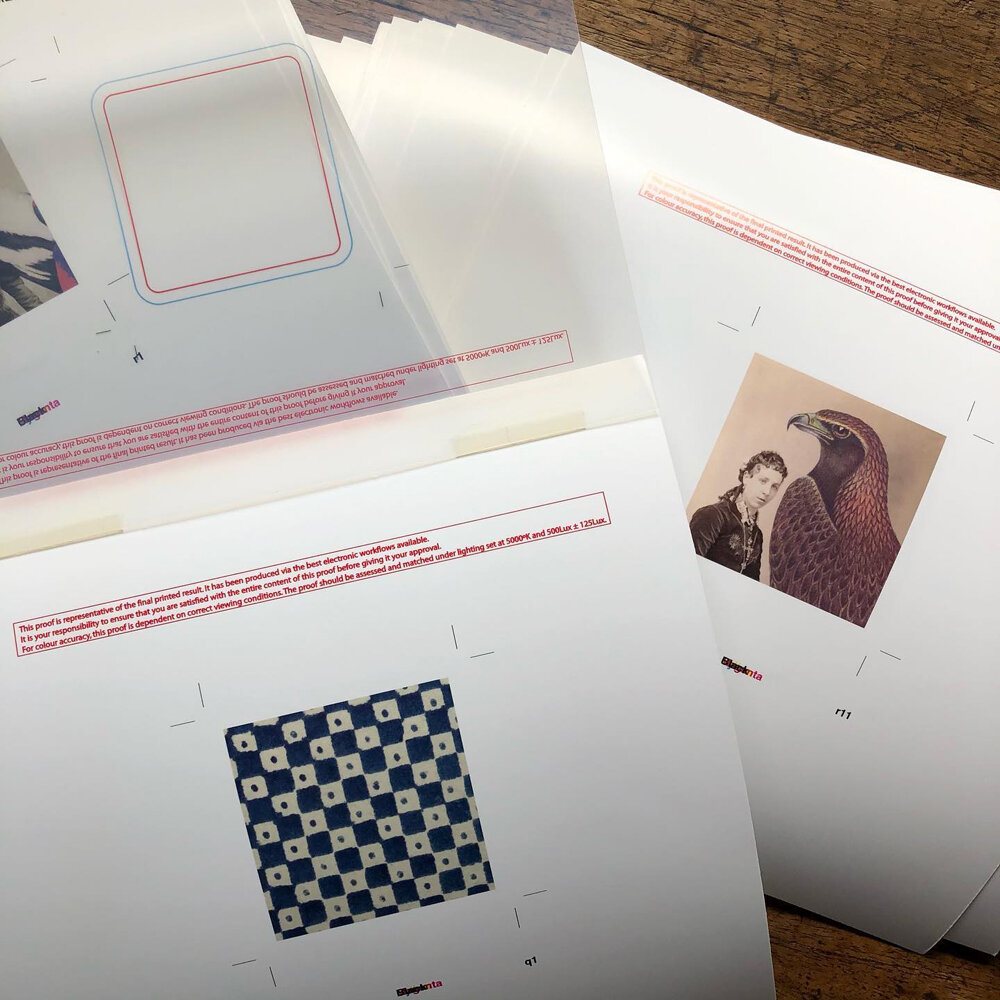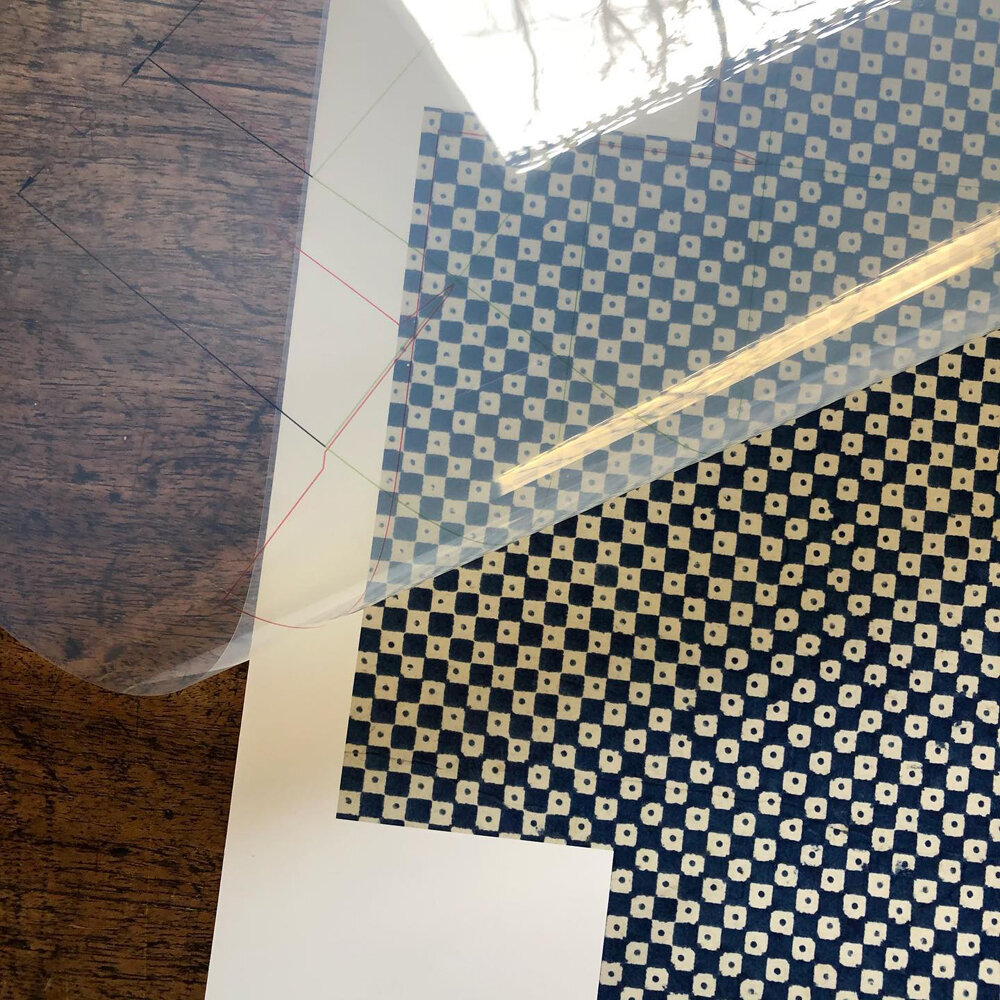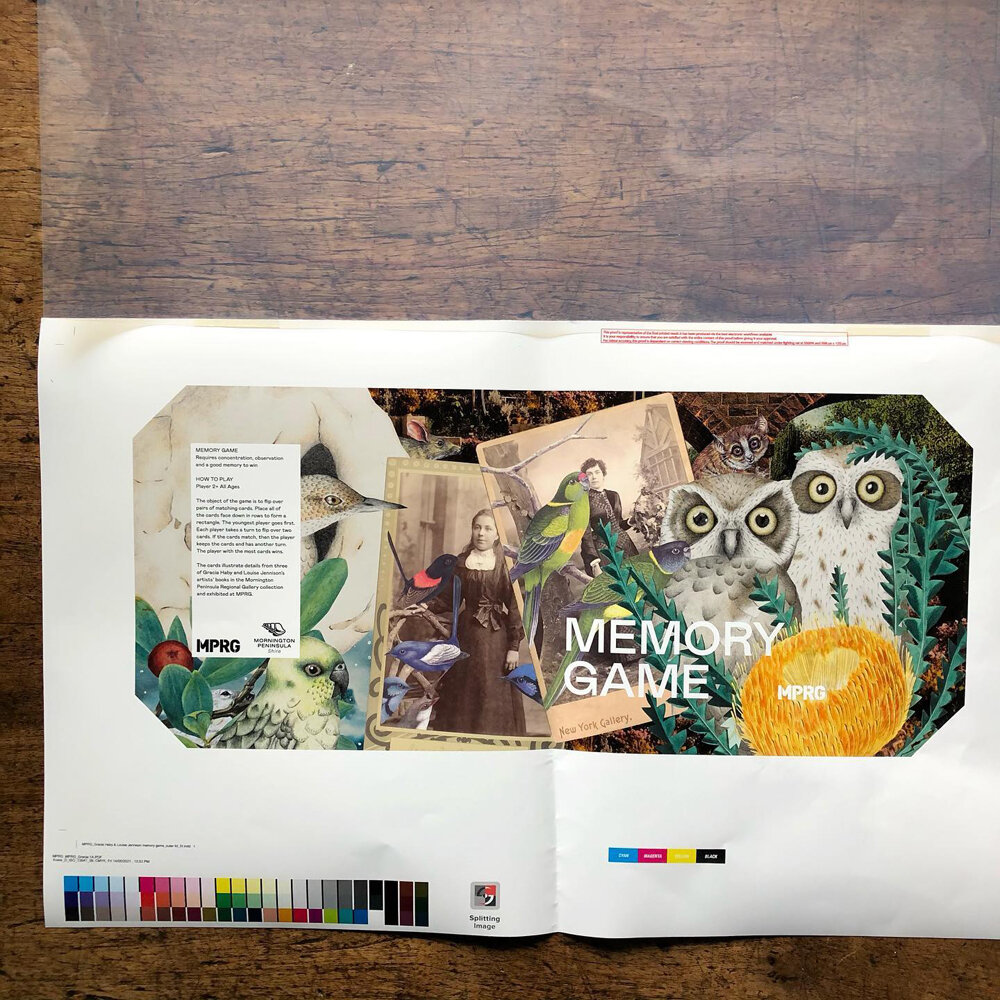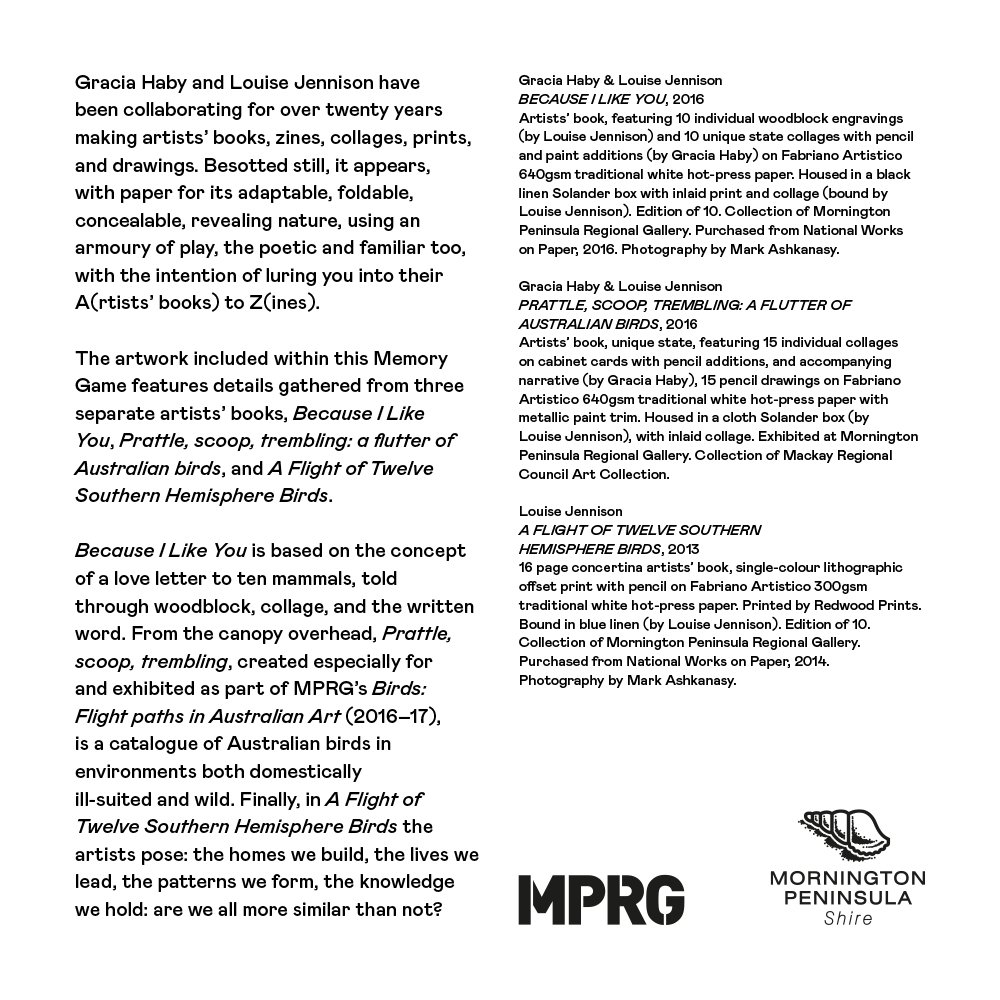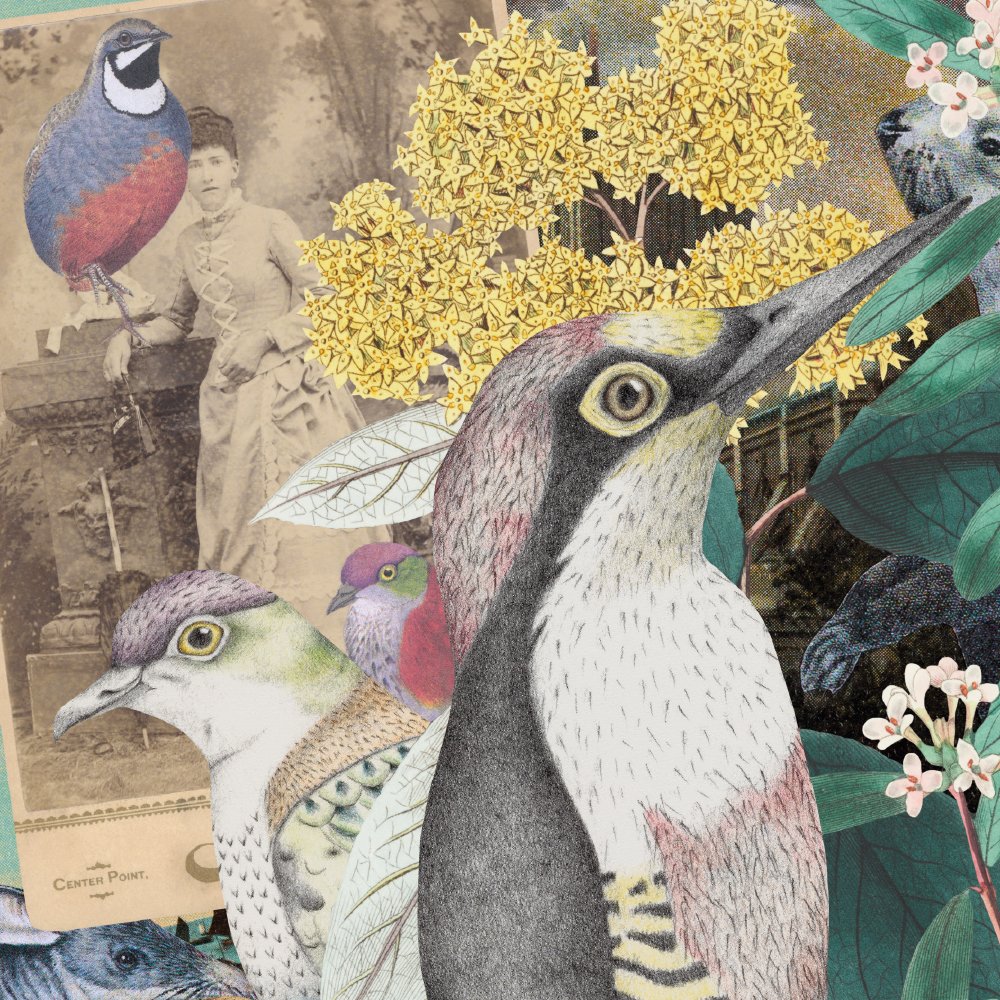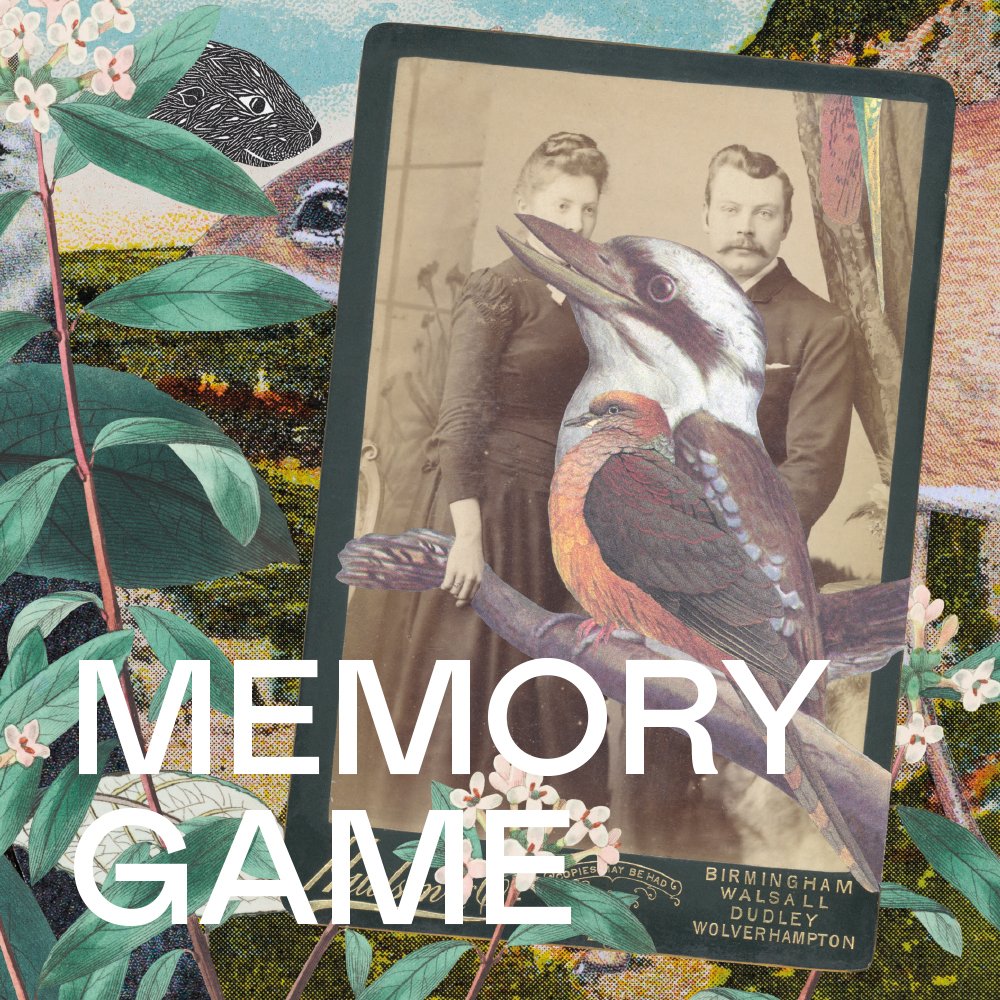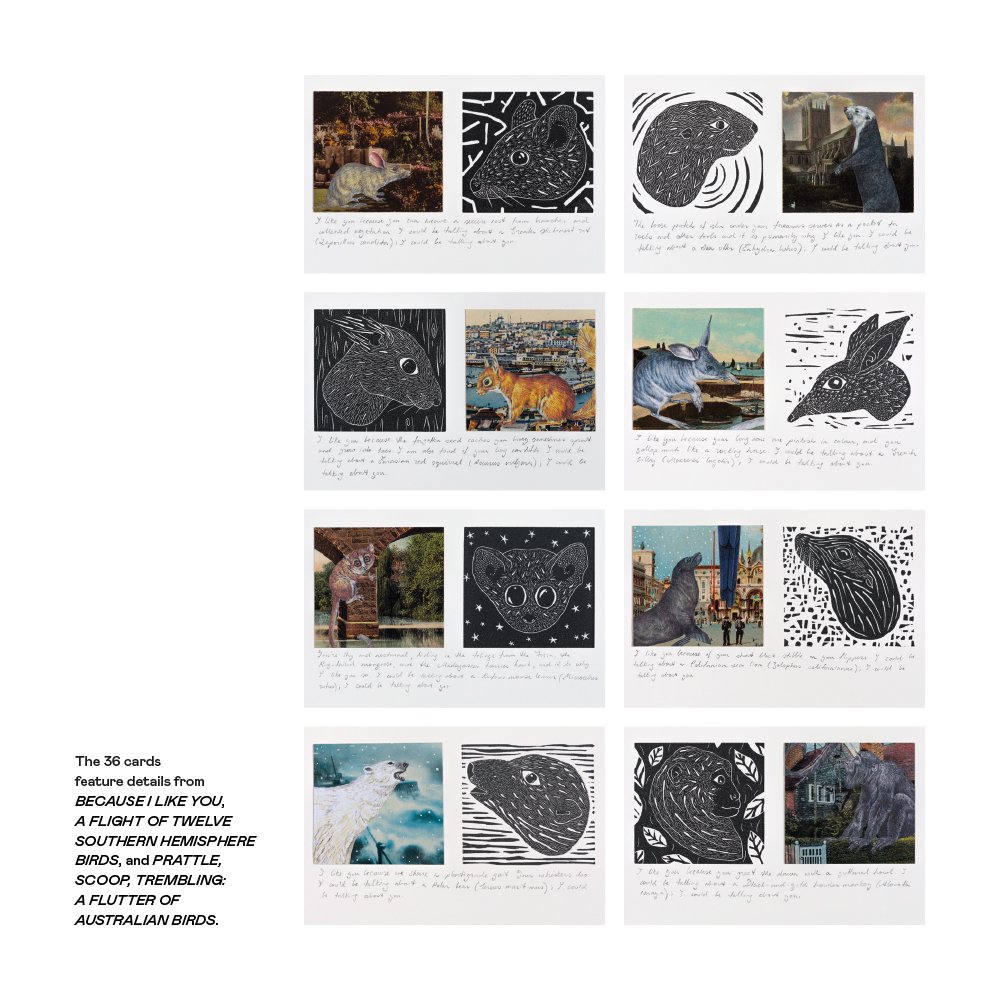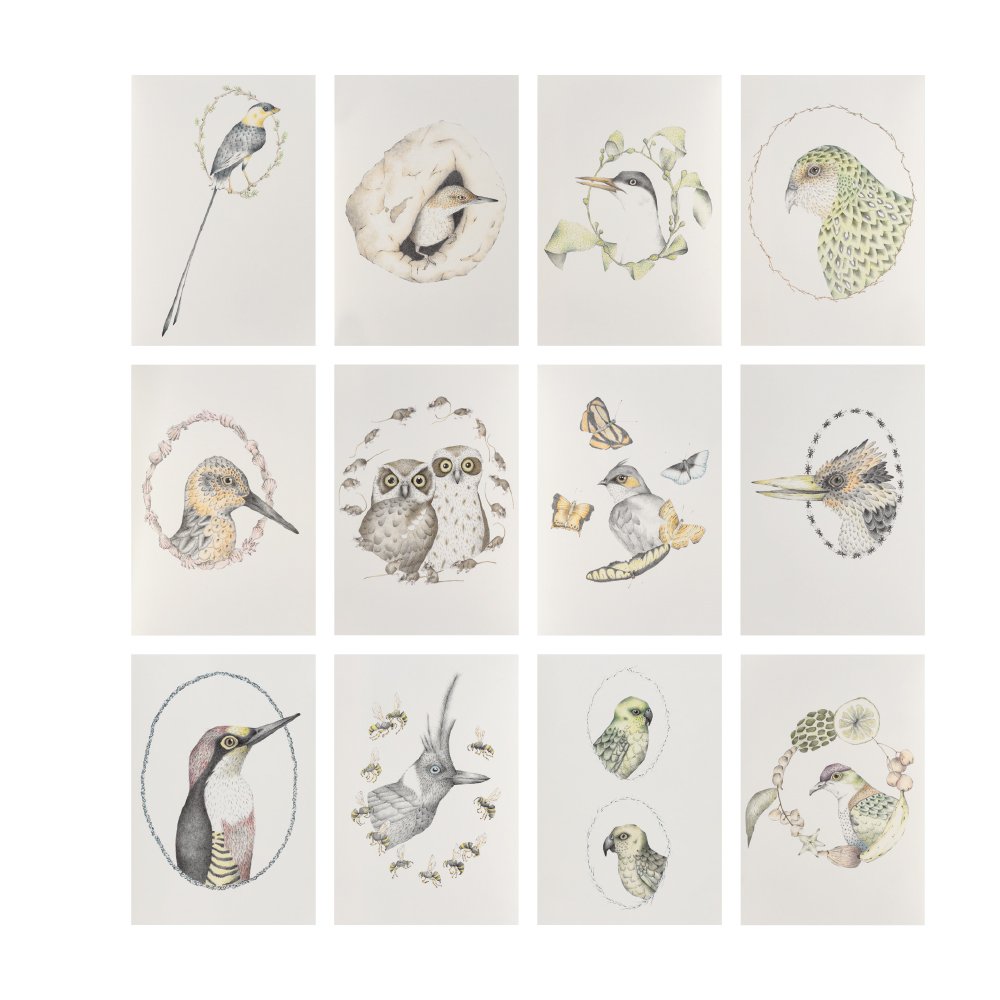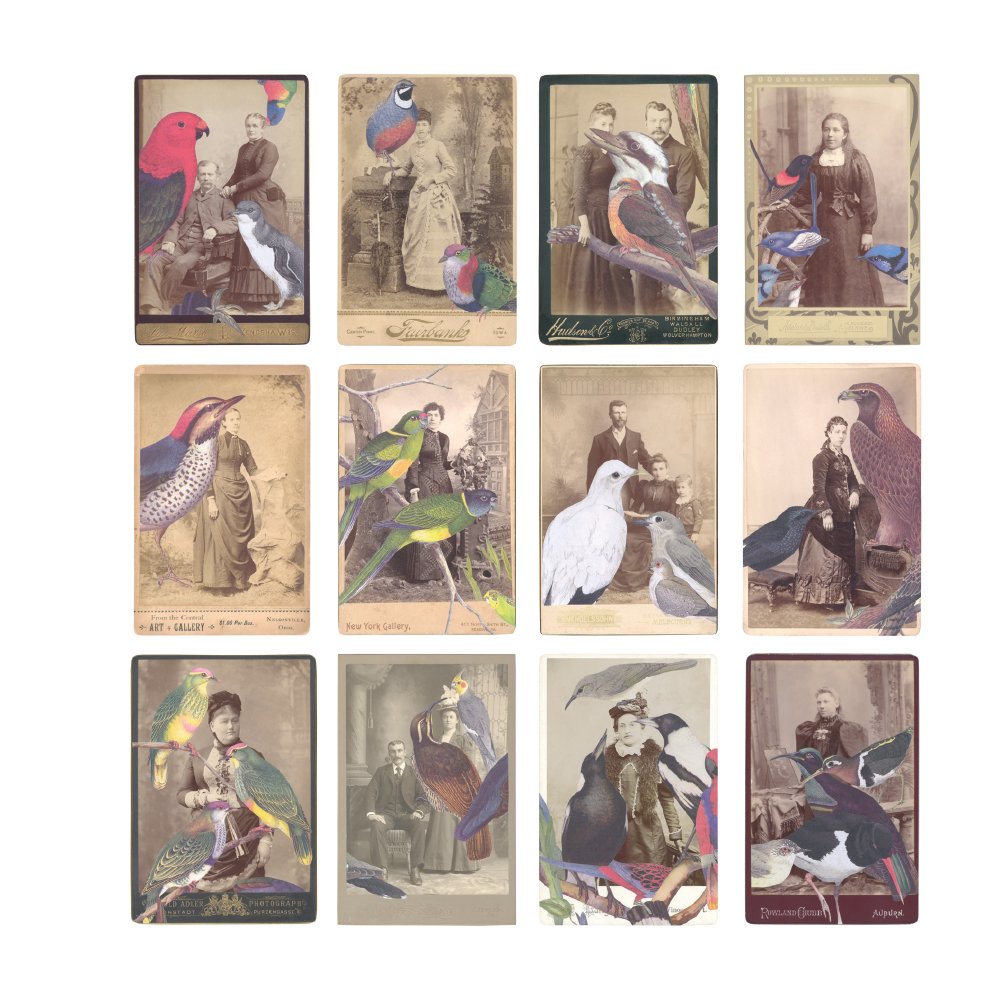MORNINGTON PENINSULA REGIONAL GALLERY MEMORY GAME
A new commission, 2021
Gracia Haby & Louise Jennison
Memory Game
2021
Collages and design created for Mornington Peninsula Regional Gallery
A Memory Game created especially for Mornington Peninsula Regional Gallery released November, 2021.
●
The artwork included within Memory Game features details gathered from three separate artists’ books, Because I Like You (2016), Prattle, scoop, trembling: a flutter of Australian birds (2016), and A Flight of Twelve Southern Hemisphere Birds (2013).
Because I Like You is based on the concept of a love letter to ten mammals, told through woodblock, collage, and the written word. From the canopy overhead, Prattle, scoop, trembling, created especially for and exhibited as part of Mornington Peninsula Regional Gallery’s Birds: Flight paths in Australian Art (2016–17), is a catalogue of Australian birds in environments both domestically ill-suited and wild. Finally, in A Flight of Twelve Southern Hemisphere Birds we pose: the homes we build, the lives we lead, the patterns we form, the knowledge we hold: are we all more similar than not?
Adorning the 36 cards within Memory Game, you will find a cast of 38 familiar beaks and muzzles, from Red-backed fairy-wrens to Sea otters. May this Memory Game cast encourage you to be awe-inspired by the interconnectedness of the world.
From the pages of Because I Like You you can see the endangered burrowing marsupial, the Greater bilby (Macrotis lagotis), with long pinkish ears, and a gallop much like a rocking horse, and, elsewhere, a Black-and-gold howler monkey (Alouatta caraya), known to greet the dawn with a guttural howl.
From the pages of Prattle, scoop, trembling: a flutter of Australian birds you can see an Australian magpie (Cracticus tibicen), with their chestnut brown eyes fixed on trinkets in the distance or an insect and their larvae; a blaze of brilliant red belonging to the Australian king-parrot (Alisterus scapularis), whose feathers, when viewed under ultraviolet light, appear to glow yellow. You can also see a Painted buttonquail (Turnix varius), who by spinning about on alternate legs, to reveal seeds and insects among the leaves and on the soil surface, create bare platelets on the ground. And a Rose-crowned fruit dove (Ptilinopus regina), if you know where to look, who are capable of swallowing fruit whole, and drink water from the hollows of leaves or from dew.
From the pages of A Flight of Twelve Southern Hemisphere Birds keep an ear out for a Southern boobook (Ninox novaeseelandiae). They give a double hoot call — ‘More-pork’ — in a pitch akin to that of a dove, and from which one of their common names, Morepork, is derived. You can also see, and possibly hear, a Kakapo (Strigops habroptilus), a marvellously robust, flightless bird, with giant claws like tree roots, who give a subsonic mating boom. Finally, a Rufous hornero (Furnarius rufus), hides within. The Rufous hornero builds distinctive oven-like nests, which are clearly visible in trees, and atop telephone and electricity poles. Fashioned from mud and manure, within these nests there are two chambers, one serving as the actual nest and the other as a decoy to bamboozle predators.
Happy sighting, both within the game and in the natural world!

